- Getting around Lijiang. Dont stay in the Old Towns more than 2 days, there is nothing to do. KRISS Oct 9, 2013 05:46
- 2013 Beijing Temple Fair BENNYLAU Feb 26, 2013 03:29
- Malaysian traveling from KUL - LAX vis Shanghai PVG ZATI_DY Jan 3, 2013 20:15
A Tale of Two Tea Villages
- Views: 8934
- |Vote: 0 0
- |Add to Favorites
- |Recommend to Friends
Longjing Tea: A Brief History & Culture
Thousands of years ago, people would make their way to a rocky ridge overlooking Hangzhou’s West Lake and named Fenghuang. Here they would pray for rain.
In the Three Kingdom’s and Eastern Jin Periods (roughly 220 – 420AD), people would make their way to a natural spring located in the hills overlooking Hangzhou’s West Lake. Here they would mix potions and elixirs.
During the 1700s Emperor Qianlong visited a small village called Longjing where he was captivated by the quality and taste of the tea made from a small number of shrubs growing there. Popular thought has it that he designated the tea grown in this area as being fit for royalty and thus the future fame of Longjing Tea was secured.
More recently Chairman Mao visited Longjing to pick the leaves for himself and brew a cup of the famous beverage. Urban legend has it that he had his own “personal” Longjing tea plant under constant watch by a full-time caretaker.
Endorsed with over a thousand years of culturally rich historical connections and an equally long and blessed growing history, I decided it was time to sample for myself this most famous Chinese tea and explore the tiny region dedicated to producing it.
[Image: looking westwards into West Lake's murky tea growing hills]
Tea Plantations Everywhere
By far the most famous village, and the one so favoured by Emperor Qianlong, is West Lake’s Longjing Tea Village. It is located westwards of the West Lake where the rush and tumble of downtown Hangzhou is increasingly forgotten under the gaze of towering hills whose slopes haven’t changed for centuries.
In fact, it is easy to believe life here hasn’t changed for centuries. Sure, there is the advent of transportation that sees me sat on a public bus, but beyond the window I can imagine my way back hundreds of years ago to where the same pickers laboured under a spring morning sun, their flax baskets slowly filling with green leaves.
Longjing Tea Village sits at the top of one of the hills, straddling a natural ridge between valleys. A single road climbs the hill and either side is full of tea plantations stretching into the distance. There can surely be few more naturally beautiful cultivated areas, comprising such elegantly formed and maintained shrubs. It feels like a garden, more vast than Versailles; hillsides of immaculate topiary climbing in deep green formation up into the misty heavens.
[Image: tea plantation & tea pickers]
Longjing Tea Village
The village itself is small and quiet, even on this bright day in the middle of the busiest picking time. Many of the inhabitants have donned their wide-brimmed straw hats and taken to the slopes to continue the tradition of spring picking that has occurred here for over a thousand years.
Washing hangs dripping from upstairs windows and pots of wild pink azaleas brighten up the street-side yards. Circular trays of the typically narrow, deep green Longjing leaves lie on the floor waiting to be fried in large pans.
Teahouses flank both sides of the only street. Mainly converted or extended village homes, each with a sign hanging over its entrance, each sign displaying the single Chinese character: 茶 (cha - meaning tea).
[Image: Longjing Tea Village]
Beyond Longjing Tea Village
Most visitors, I would guess, are happy to sample the delights of bottomless glasses of Longjing Tea and gaze into the plantations from a teahouse balcony. It doesn’t get more picturesque or tranquil than that, I agree. Yet, for me, there is something magical about Longjing Tea that lies as much in the hills, soils and plant itself as in the village that produces it. The village is the doorway to Longjing Tea, but it is not the tea, and to find the tea I feel compelled to go out (and up) into the hills.
It’s not difficult to wander back down the hill from Longjing and find small pathways leading off into undergrowth and woodlands. I wonder at first if I am allowed to tread the paths, but I don’t meet another soul and I continue my way through the dappled shade and occasional spider’s webs.
It’s fifteen minutes or so before I emerge onto the edge of a tea plantation, which itself is on the edge of a hill that tumbles down into a forested valley. The view is dizzying. In every direction steeply terraced rows of tea plants criss-cross the hills. Their intricate patterns are inescapable models of human design, weaving across sheer slopes and between stubborn ancient pines, in line after glorious green line.
I spend hours climbing through plantation after plantation, brushing through rows of this most special of all Chinese teas. There are villagers mending fences and creating new terraces, a silent industry that keeps the plantations alive. In the surrounding hills I can spot only the outlines of straw hats, tiny as coins, which I know are the tea pickers.
Even the dead are buried here, with tea bushes right up to their tombs, and I like to imagine their ghosts keeping an invisible, timeless watch.
[Image: tombs amidst the tea]
A Tale of Two Tea Pickers
I come across two women picking tea who smile encouragingly at me and I say hello and ask them if I can help them. Perhaps they think I am crazy. I am prepared for them to say no, but instead they beckon me closer in friendly agreement. I watch their wordless demonstration: they pick double-handed, with a deft pinch of the leaf tips that severs the leaf and a little of the stalk cleanly.
Despite considering myself nimble-fingered, I can only manage picking with a single hand and unskilled slowness. I frequently manage to pull the tip of the leaf off, leaving half the leaf behind on the bush. I apologise in advance to the person who gets my pickings as I toss the half-leaves into the basket. The leaves smell deliciously sweet and woody; they stain my fingers.
The soil is red and stony, not the richly composted loam I would have expected, but it is acidic and free draining: perfect for tea. Add to this the weather: an ample sunshine and rainfall blend plus the protective windbreak of the surrounding hills and you have the equivalent of tea-growing heaven.
The two women answer my curious questions. The spring picking is the most important, producing the choicest grade of tea that from their plantation can earn up to one thousand RMB per kilogram. Depending on the weather it is usually completed in a few weeks, before some date in April. It is at this time of spring growth that the greenest, richest newborn leaves emerge and it is these that once dried, capturing all the nutrients and flavour, make Longjing Tea’s unique flavour.
[Image: the two tea pickers]
One Thousand Yuan Per Kilo
One thousand RMB a kilogram might sound like a lot of money for some tea, but when you consider that a picker might pick at most one kilogram of spring tea in a day (the leaves are very small) and that one kilogram of freshly picked leaves makes between three hundred and four hundred grams of dried leaves, then it really isn’t so bad. I thank the women, grateful for the insight into their lives and the chance to pick my way, with a few leaves, into Longjing’s history.
Before leaving Longjing, I buy two hundred grams of tea that the seller weighs, checks and weighs again. She doesn’t want to give me a single leaf too many. It is the “Spring 2007” picking – and I do pay for it – but I don’t begrudge a single mao. Now, when I add boiling water to a tall glass of Longjing tea, I can breathe in the exact heady scent of woodland-blossom-rain that I first smelt when breaking a leaf fresh from the branch.
[Image: Spring leaves of Longjing Tea waiting to be dried]
Meijiawu Tea Village in Autumn
Now it is Autumn and with my Longjing tea stocks nearly empty I decide to return to the hillsides at the western shores of West Lake to replenish them. This time I am visiting a much less well-known (to “Westerners” at least) tea village called Meijiawu. As I discover when I get there, the Chinese and Korean’s have been enjoying the delights of Meijiawu for quite some time.
The journey to Meijiawu is long and awkward. I take the wrong bus, get off at the wrong stop and waste a good couple of hours getting there. Finally on the right bus and the right road but entranced by the tea plantations, I quit the bus many stops early to continue on foot up to the village.
The hills are not so high, or densely packed as at Longjing – the overall effect less stunning – but to my mind, the tea bushes here look even more impressive and verdant than at Longjing this spring. Perhaps it is so, after the ferocious heat of the summer and the heavy rains. I am amazed that the brush with Typhoon Krosa that left Hangzhou flooded and battered just a week or so earlier, seems to have had no effect here. In fact, a newly emerging bright green halo of leaves surrounds every bush.
Fewer familiar round-hatted figures are working the rows, but they are there, deftly pinching the leaves and tips of this autumn harvest.
[Image: tea plantations around Meijiawu Village]
The Streets of Meijiawu Tea Village
It is mid-day and Meijiawu is humming with life, yet feels uncluttered with people. This seems like an impossibility when you consider the car-park filled with tour buses and this village with just a single road. It is only when you take a few steps off the road and begin to wander the alleyways of the village that you discover its space-defying labyrinthine design.
It reminds me of a temple I once visited that occupied a very small space on the ground but was built vertically, making for hours of climbing and exploring. Meijiawu Village has the same qualities, with houses climbing in terraces (not unlike the tea) and hutong-esque pathways that wind, narrower and narrower, ending in miniature courtyards.
The village moves outward and upwards, with teahouses at every turn. Grandiose two-storey villas line the road, and their large wooden tables play host to the click and snap of Mahjong tiles. Further upwards and outwards and the teahouses become smaller and more humble, until deep in the alleyways you can find a single room in someone’s house: a table, a flask of boiling water and the prospect of a cheaper brew of tea.
[Image: streetlife in Meijiawu Tea Village]
The Tea Plants are Flowering
It is still Longjing Tea that grows here in Meijiawu, but the brand is named after this village. I spend a while walking amongst the tea plantations here, more easily accessible than at Longjing, and equally less peopled. The pathways through the hills stretch upwards and onwards and I hear one man say that you can follow the path right through to Longjing. I’m not inclined to disagree and I know that days worth of walking exists in these hills, as long as you don’t mind steps.
The rows are thickly planted with the same horizontal terracing as Longjing that allows the quick-draining of excess rainfall and maximum exposure to sunlight. The plantations still strike me as being creations of great beauty winding their way along the land’s contours: close-up the tea plants are like sculpted green globes but from a distance they resemble the ploughed furrows of fields.
Even better is that the tea plants are just coming into flower. I get closer to investigate the pure white petals and the mass of tiny golden-balled stamens at the centre. The scent from the flower is as heady as that of the leaves, but with a touch of honeyed sweetness.
[Image: the flower of a tea plant]
The Aroma of Meijiawu Tea
In the street, and dotted amongst the alleyways, the local villagers are sat at their mobile stoves drying the tea. I stop to talk to one man. He is pan-frying some of the autumn harvest, picked today, in a great metal pan. Underneath the pan a wood fire provides the heat and a small chimney funnels off the smoke.
He tells me that it takes between two and three hours of “frying” for the freshly picked leaves to be properly dried. It is fascinating to watch and when he suggests I have a try, but that I shouldn’t touch the pan itself, I can’t resist. I can feel the heat from the pan is burning (and it’s no wonder he is wearing a glove). I touch the top leaves tentatively and they are pleasantly warm and just beginning to crisp. I move my hand through the pile of leaves and it feels very soothing.
The “Autumn 2007” picking of Meijiawu Longjing Tea is not the choicest grade. It sells for between sixty and eighty RMB a kilogram. I buy five hundred grams of his just-cooked, still warm leaves. They are long, narrow and an almost black-green and I know I’ve never been near such freshly picked and dried tea.
On the journey home I can’t help lifting the lid and taking a sniff of these wonderful leaves. I close my eyes and feel that I am walking through the misty plantations. I might be imagining it but I swear this aroma has a special tang, the smells of autumn are upon them: wood smoke, the soil after the rain and the scent of fallen leaves crushed underfoot.
[Image: pan-frying Meijiawu Tea]
Information (Spring & Autumn 2007)
Both villages are to be found in the city of Hangzhou (杭州) in Zhejiang Province (浙江省). They are located on the western side of West Lake (西湖) and can be reached by public buses from downtown Hangzhou.
Getting There:
Longjing (or Dragon Well) Tea Village [龙井村]
Bus no: Y3 or 27
Meijiawu Tea Village [梅家坞村]
Bus no: 324 (but this only runs about 6 times a day) otherwise catch the K504/K514, get off at Songcheng (宋城) and then catch the Y4.
Bus Fares: 2RMB – 5RMB
Guide to Tea Prices:
I’m not an expert and can only tell you what I paid, as below:
Tea picked in Spring is the most expensive and the best quality.
Expect to pay upwards of 40RMB per 50g (一两).
Tea picked in Autumn is pretty cheap and the quality is obviously not as good.
Expect to pay around 40RMB per 500g (一斤)
[Image: looking down upon Meijiawu Tea Village]



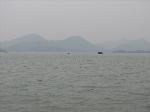
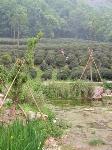

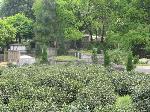
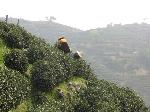
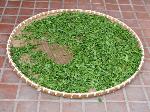
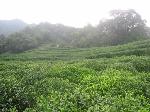




 Copyright © 1998-2025 All rights reserved.
Copyright © 1998-2025 All rights reserved.
1.
Oct 21, 2007 21:32 Reply
CHYNAGYRL said:
oh... when i read this i could almost imagine what the fresh tea leaves smell like... how wonderful!!! i can't wait to go there and experience it for myself :-)